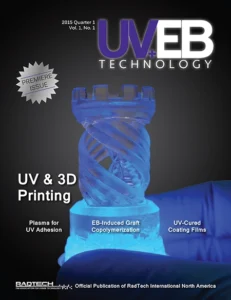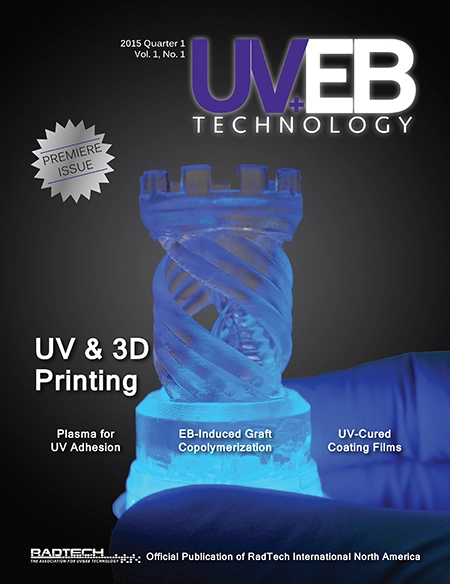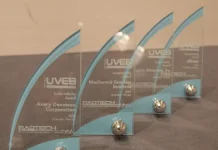By David Harbourne, past president of RadTech International North America
 Those of us who were involved in the foundation of an independent RadTech International North America entity often express our disappointment, and frustration, that UV/EB technology has failed to reach its true potential. We have not been able to capitalize on the technology’s compelling value proposition.
Those of us who were involved in the foundation of an independent RadTech International North America entity often express our disappointment, and frustration, that UV/EB technology has failed to reach its true potential. We have not been able to capitalize on the technology’s compelling value proposition.
However, when examined more closely, it is clear that this is a generalization that fails to recognize the successes where UV/EB technology has become the manufacturing process of choice. Examples include optical fiber buffer coatings, flexographic and inkjet printing, wood coatings, adhesives and coatings for electronics and medical device applications, and flat-screen display functional coatings.
Over the past decade, one cannot underestimate the contribution to growth in the adoption of this technology that has been made by the UV+EB Technology magazine, published for RadTech by Peterson Media Group. During this time, under the stewardship of Dianna Brodine, vice president of editorial, the circulation of UV+EB Technology magazine has grown by 168%, to a current readership of almost 14,000 each quarter. This is further supplemented by 10,000 digital edition page views each month and 8,000 website page views each month. This is a remarkable achievement, one that would not have been possible without significant contributions from Gary Cohen, executive director; Mickey Fortune, associate executive director; the dedication and technical guidance of the members of the Editorial Board; and all those individuals who have provided relevant news articles and content. As a result of these efforts, UV+EB Technology magazine now is becoming a “must read” journal for those who have interest in the technology in Europe and Asia, as well as among North American readers.
The magazine’s growth continues. 2023 witnessed the introduction of a mini magazine published jointly with the Photopolymer Additive Manufacturing Alliance (PAMA) specifically dedicated to the use of UV curing within the additive manufacturing market.
What, you may ask, is the next challenge for RadTech, advocates for the technology, UV+EB Technology magazine and associated media activities? All of these outlets must continue to provide information and compelling arguments that enable potential end users to overcome the technical and debt legacies that are the primary barriers to adoption of the technology. The association and its magazine also must continue to be the primary source of information about UV/EB technology to all constituents, end users, potential end users, suppliers, government and academia.
With a renewed focus on new innovative applications of the technology, Radtech and its associated publications and media activities must encourage and support the transition of “innovators” on their journey to become “early adopters” and the journey of “early adopters” to becoming the “early majority” of UV/EB technology.
With the global focus on the adverse aspects of climate change, global warming, increasing energy costs and the drive for increases in manufacturing economies, there surely has never been a better time to promote the use of these environmentally proactive technologies.






